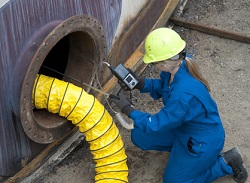A common question is frequently asked regarding catalytic bead LEL sensors. People are always curious why LEL sensors tend to drift as much as they do. This tends to happen most often in temperatures that are hot and humid. In order to fully comprehend why this drift takes place, you first need to have a grasp of the operating principle that allows these sensors to function the way they do.
How an LEL sensor works
There are a pair of resistive fine-wire elements that comprise a catalytic bead LEL sensor. One of them is a reference and the other is an LEL detector. When gas that is combustible is exposed to the detector, the bead’s temperature is raised. This causes the resistance to be increased. The signal that represents the gas concentration is the difference in the resistance between the reference elements and the detector.
Popular theories
In theory, if an atmosphere is full of clean air, the sensor signal should stay at zero and the resistance of the elements should not change. However, this is not what actually happens. When the atmosphere’s thermal properties begin to change, so will the resistance of the elements. Another popular theory suggests that if two elements have an equal resistance, atmospheric changes that occur to the thermal conductivity that are not related to combustible gas being present would result in each element’s resistance changing at an equal rate. This would also cause the sensor’s signal to stay at zero. However, it is important to point out that this is still only a theory. The resistance of two elements is hardly ever exact. Therefore, any atmospheric changes that occur related to thermal conductivity will result in the changing of the resistance of the elements happening at different rates. This will create a signal originating from the sensor that looks like zero drift. It is possible for the drift to be either negative or positive. It will depend directly on the amount of resistance of a single element as it relates to the other.
How manufacturers deal with drift
Companies that manufacture instruments both deal with the drift in very different ways. It is common for the drift to be masked in the negative direction by certain manufacturers. Others will apply a “dead-band” to the sensor readings, causing the amount of drift in each direction to be masked. When this happens, all readings will look like zero that are in the proximity of the dead-band. Another method some manufacturers use is to use complicated software filtering algorithms to limit the amount of drift. Since the drift is usually no more that several percent LEL, it is often ignored by users. 10 percent is where most LEL alarm points are set at.
When the weather is particularly hot and humid, it would be a good idea to maintain the thresholds for the LEL alarm at levels that are reasonable. The LEL sensors should also be zeroed when they are being used in areas that are outdoors.
Image source: http://www.askdaveblog.com/

